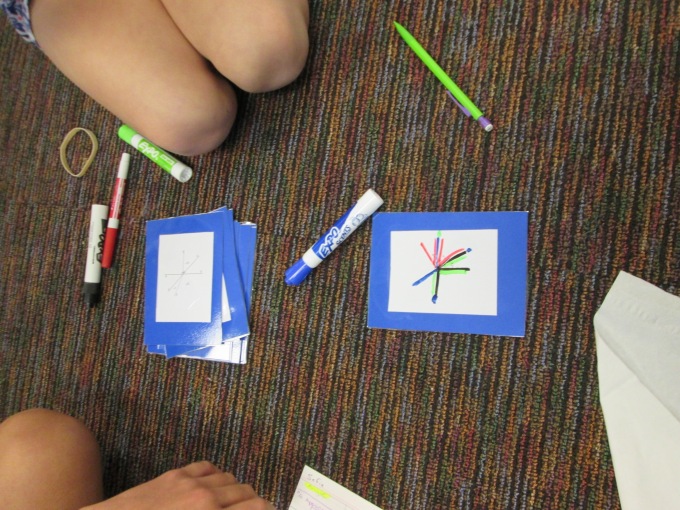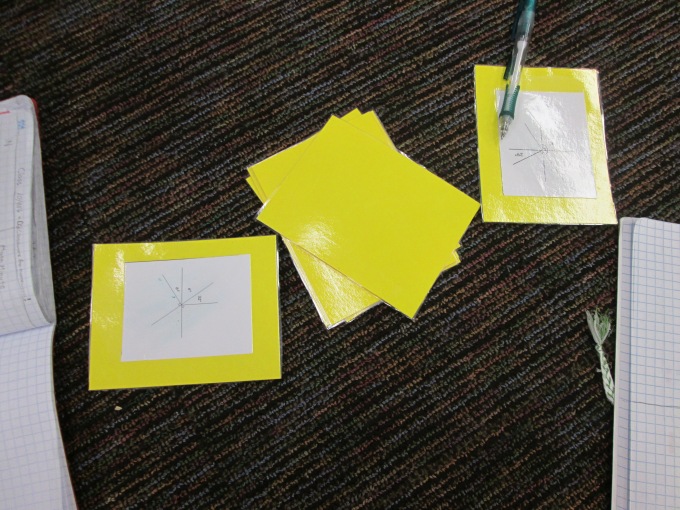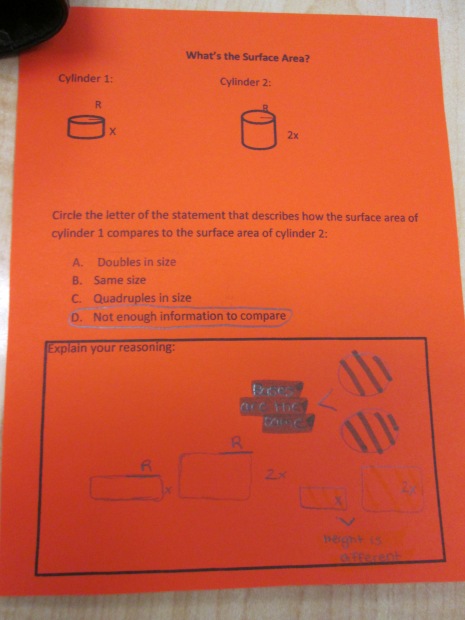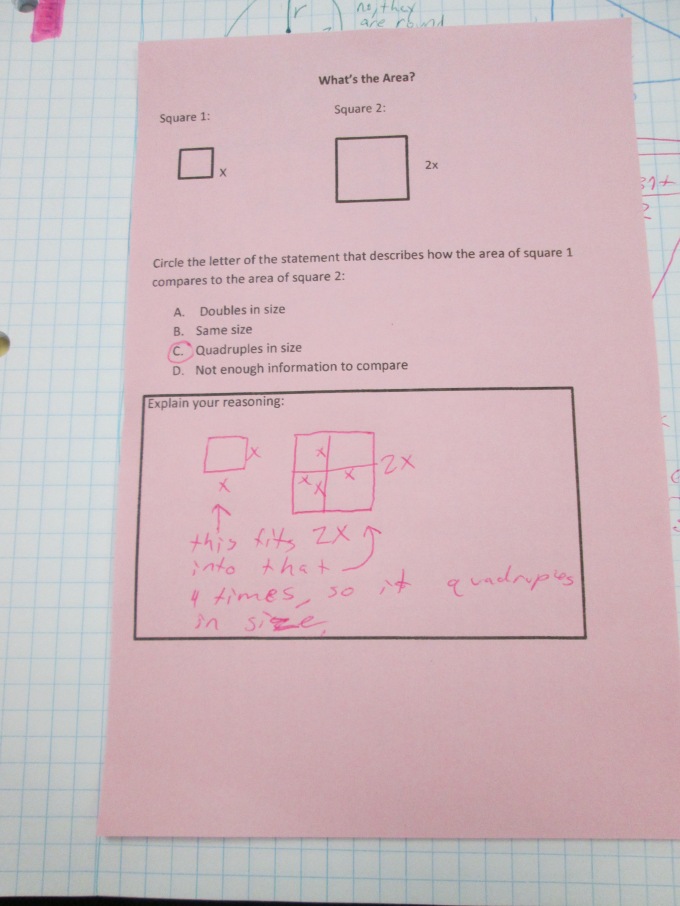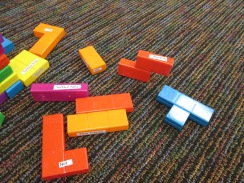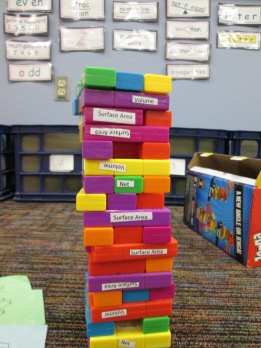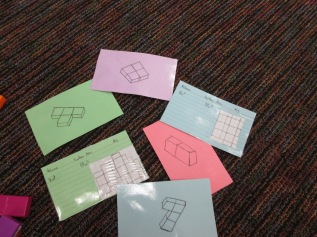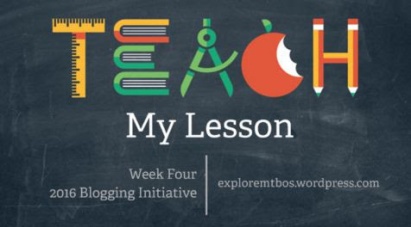
Gung Hay Fat Choy, Saint Valentine! East meets west in the southwest. It’s actually not quite as strange as it may seem. First though, a little context because math, like life, makes more sense when seen as part of a larger story.
The Prequel
My class is in the middle of a unit solving problems relating to surface area and volume. The unit began by exploring the area of two dimensional shapes (parallelograms, triangles, trapezoids, circles, and irregular or complex shapes). Next, the class began exploring nets and the area of nets. The lesson just prior to this lesson had students creating nets for a rectangular prism with a square base and finding the area of the nets. They explored the idea that the same 3D shape can have many nets but that all the nets have the same area. Some students found the area by treating the net as an irregular shape (decomposing the net into parts and summing the area of the parts). Other students summed the area of all the faces (while this is also decomposing the net, it is in a more prescribed way). These were Connected Math lessons (a research-based constructivist curriculum).
The next lesson was slated to be further exploration of rectangular prisms with rectangular (rather than square) bases. I felt my students were ready for greater challenge but wanted to stick with the plan of allowing them to construct an understanding of surface area.
Gung Hay Fat Choy, Saint Valentine
After a quick entry card in which students had to find the net of a triangular prism, the class watched a short video clip of a dragon dance. (While they were watching, I touched base with any students who had made an error on the entry card.) Then, we had a brief discussion about the dragon dance and the fact that lunar new year is next week. We talked a little bit about how different families celebrate the new year. At that point, I explained that, since next week was both the lunar new year and Valentine’s Day, I was thinking about sending a care package to my daughters away at school. The care package provided the context for the lesson. I told them I was thinking of sending a gift card (in lieu of the red envelop filled with money) in a gift card box, a canister of green tea (because oranges in the mail might not be the best idea), a Toblerone (because of course they would expect some chocolate for Valentine’s Day), and a can of green chile (because that is the food they miss most from home). Since it was a surprise package, it would be fun to wrap everything. I wanted to keep costs down, though, so I needed to know how much it would cost to wrap each item before making a final decision about the gift wrap.
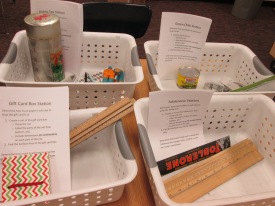
I created four stations for students. Each station contained one of the items to go in the care package. Students needed to create a net, label the faces, and include the dimensions. Next, they needed to find the area of the net. Finally, they had to find the cost of the paper to wrap the paper given that the paper cost 1/10 of a cent per square centimeter. Students in each group had to reach a consensus on the area and cost before moving to the next station.
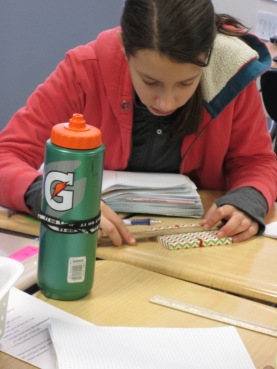
- The gift card box station was a slight step up in demand from the previous day only in that they had to determine the cost of the paper. The challenge here was the idea of 1/10 of a cent. My key questions for this station were:
- What does the paper cost?
- What is 1/10 of a cent?
- What is a reasonable answer?
I expected the most likely error to be students multiplying the area by 1/10 rather than by 1/1000 to find the cost. That held true. A shocked expression at the proposal that I pay $23 to wrap something was followed by questions about what it means to be 1/10 of a cent.
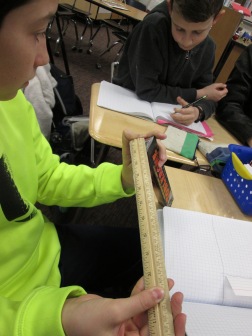
- The Toblerone station was a slightly bigger step but still very accessible. While this was the first time students would have to find the area of a triangular prism, they had plenty of experience with the creation of different kinds of nets and had figured out that the surface area of a rectangular prism was the area of its net. I saw this as a relatively small step in thought that they should be able to figure out without any real guidance. My key questions for this station were:
- What do you need to measure on the triangular base?
- Is it enough to measure a single side? Why is that sufficient or why isn’t it?
- How can you tell if the triangle is equilateral?
- Would it impact the net if the sides of the triangle were not congruent? How?
I expected students to take the easy way out and simply assume that the triangular prism was built on an equilateral triangle base. They pretty much held true to my expectations, so we had some interesting conversations about the need to verify assumptions.
- The green chile and green tea stations were going to be a bigger step. The larger step was part of my decision to have two stations that were so similar. I expected the net to be a little bit of a challenge. I expected some struggle with determining what the “side” of the cylinder would look like in two-dimensional space. I also expected some struggle with determining the dimensions of the rectangle. My key questions were:
- What does the net look like?
- What are the dimensions of the rectangle?
- How could you create a model that might help you figure out the dimensions?
- What dimension should you use for the circle?
Some students readily made the connection to a can label as they grappled with the net and dimensions. Others played around with the idea of modeling the can. Most grabbed a piece of paper (often, one of the task cards) to create the model. Almost all of them then made the connection to the rectangular shape and the idea of the circumference as one of the dimensions.
I thought that we should be able to move through all the stations in a single day, but things took a little longer than expected. I wanted kids to construct their own understanding at this stage, so I chose to let them take the time necessary to do that. I extended the lesson into a second day to finish the stations.
I added a concluding activity on the second day summarizing out experience with surface area. Students completed a foldable comparing and contrasting surface area of rectangular prisms, triangular prisms, and cylinders.
Comparing & Contrasting Surface Area of Prisms and Cylinders
I also created a modified version of the foldable for two of my students. The modified version provides a little more explicit guidance with regard to some of the sequential steps in finding the area.
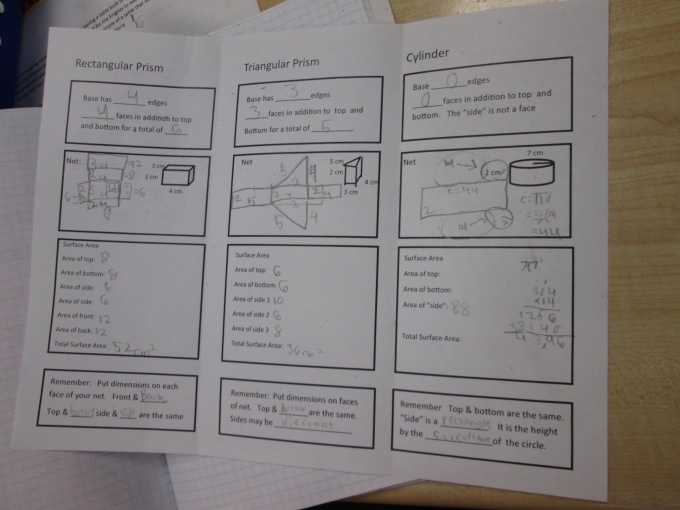
Comparing & Contrasting Surface Area of Prisms and Cylinders Modified
Coming Attractions
Tomorrow, we will explore surface area for a fixed volume.


